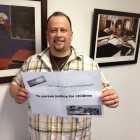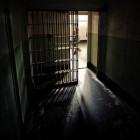
On July 19, the Office of Juvenile Justice and Delinquency Prevention (OJJDP) will present a webinar titled “The Critical Role of Families in Reducing Risk and Promoting Well-Being for Lesbian, Gay, Bisexual, Transgender, Questioning and Intersex (LGBTQI) Youth.”
The webinar is the second in the organization’s “Understanding and Overcoming the Challenges Faced by Lesbian, Gay, Bisexual, Transgender and Intersex Youth” series, and will focus on resources, strategies and tools used for family education and intervention. During the webinar, research findings and program approaches from several organizations will be discussed, including techniques and data presented by The Family Acceptance Project, Greater Boston Parents, Families and Friends of Lesbians and Gays (PFLAG), the Green Chimneys Program of New York City and San Francisco State University. The event will examine how family acceptance promotes the mental health and well being of LGBTQI youth, as well as techniques for reducing risks of depression, suicide, substance abuse, homelessness and potential sexual health hazards. The webinar is sponsored by the National Training & Technical Assistance Center, a program operated by the OJJDP. The online presentation is scheduled to begin at 2 p.m. EDT, and will run approximately one and a half hours.









